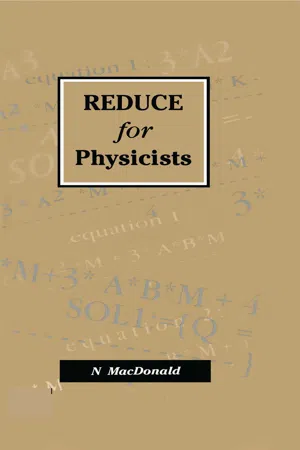
- 168 pages
- English
- ePUB (mobile friendly)
- Available on iOS & Android
REDUCE for Physicists
About this book
The use of computer algebra systems in science and engineering has grown rapidly as more people realize their potential to solve tedious and extensive mathematical problems. REDUCE for Physicists provides a comprehensive introduction to one of the most widely available and simple to use computer algebra systems, focusing primarily on the needs of physicists. As a means of performing symbolic computation, REDUCE reduces tedious manual algebraic calculations and the dangers of casual errors. Each chapter introduces some aspects of REDUCE and illustrates them with applications from various branches of physics including mechanics, dynamics, dimensional analysis, quantum mechanics, and plasma physics. Emphasizing hands-on work with REDUCE to tackle real physical problems, the book includes exercises to test understanding throughout. Students and researchers in the physical sciences and engineering using REDUCE for the first time will find this book an invaluable aid to learning.
Frequently asked questions
- Essential is ideal for learners and professionals who enjoy exploring a wide range of subjects. Access the Essential Library with 800,000+ trusted titles and best-sellers across business, personal growth, and the humanities. Includes unlimited reading time and Standard Read Aloud voice.
- Complete: Perfect for advanced learners and researchers needing full, unrestricted access. Unlock 1.4M+ books across hundreds of subjects, including academic and specialized titles. The Complete Plan also includes advanced features like Premium Read Aloud and Research Assistant.
Please note we cannot support devices running on iOS 13 and Android 7 or earlier. Learn more about using the app.
Information
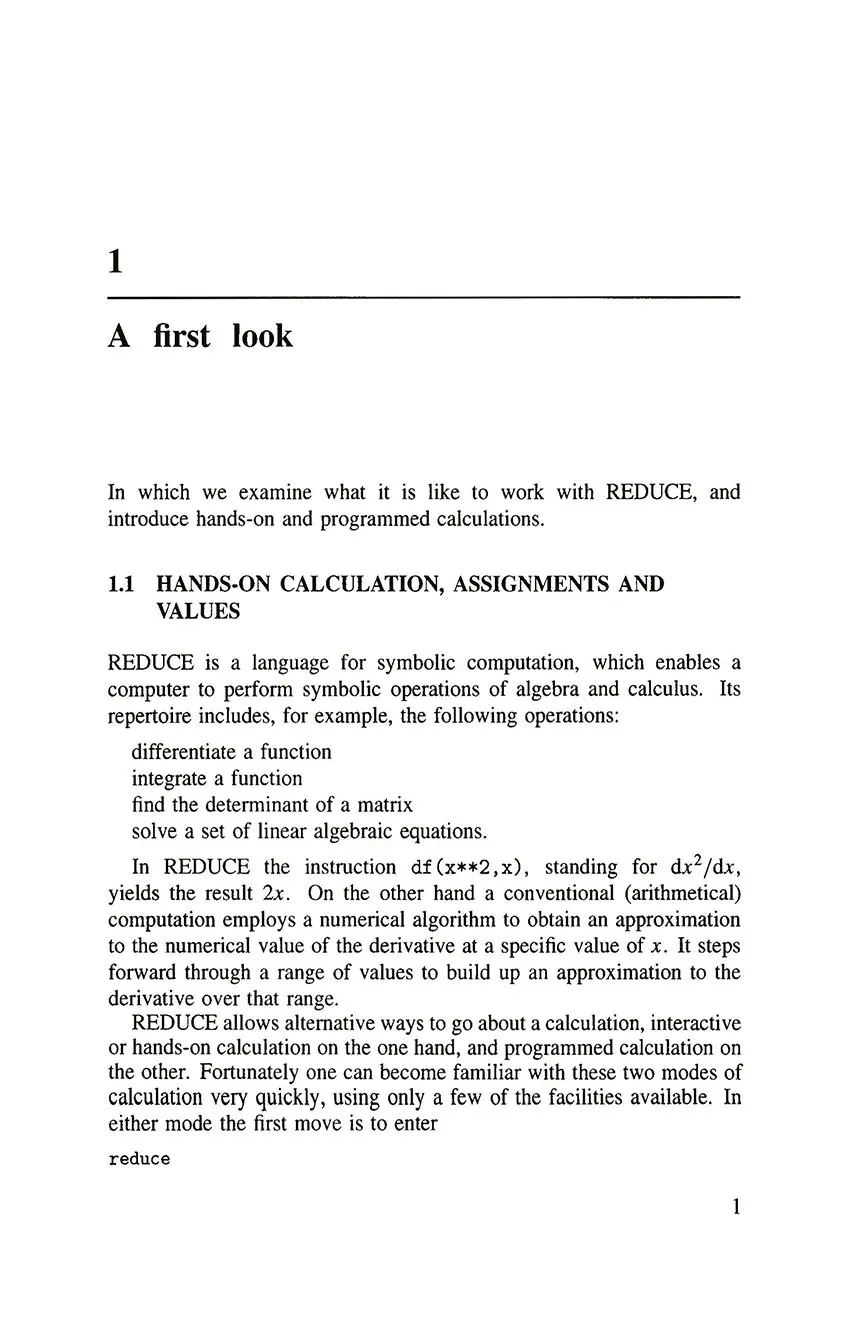
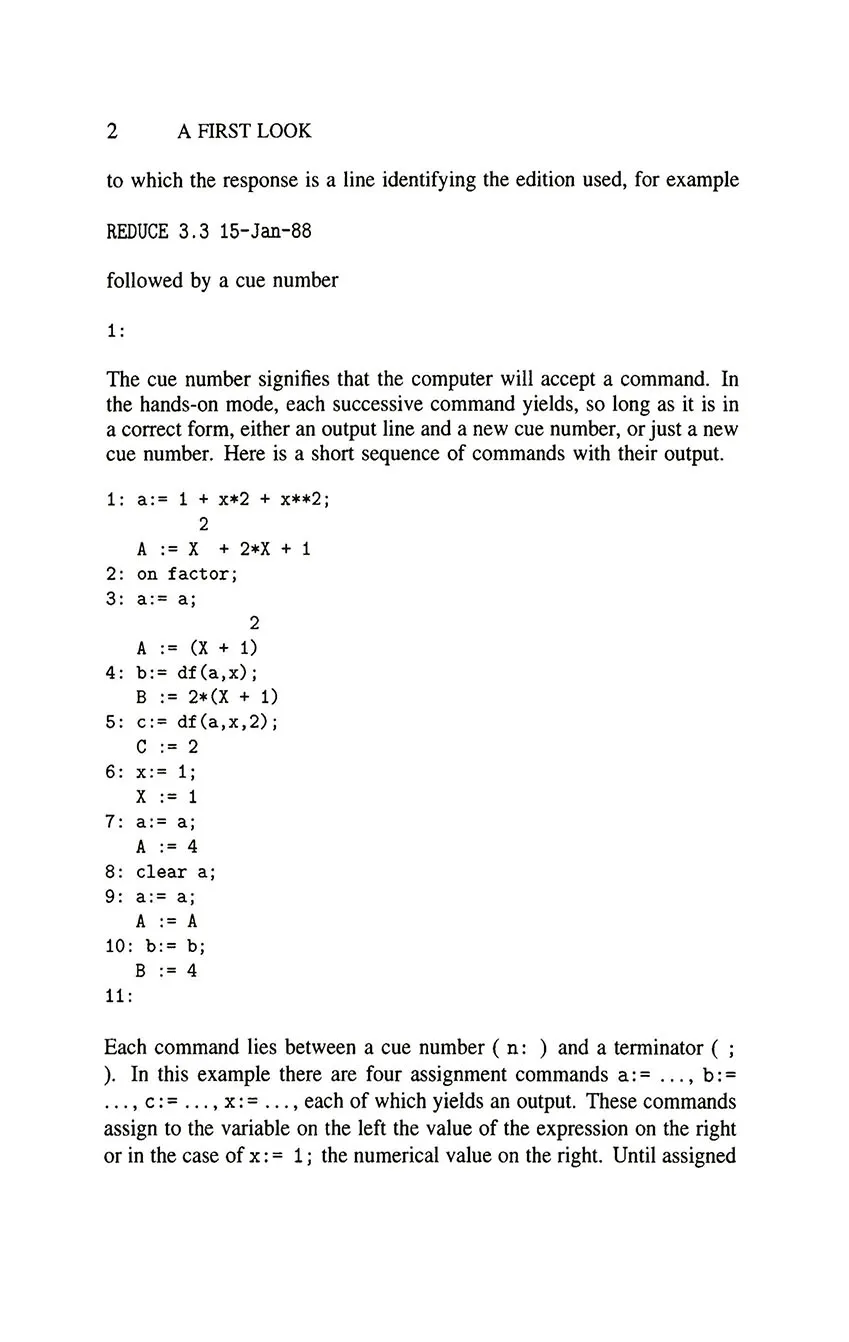
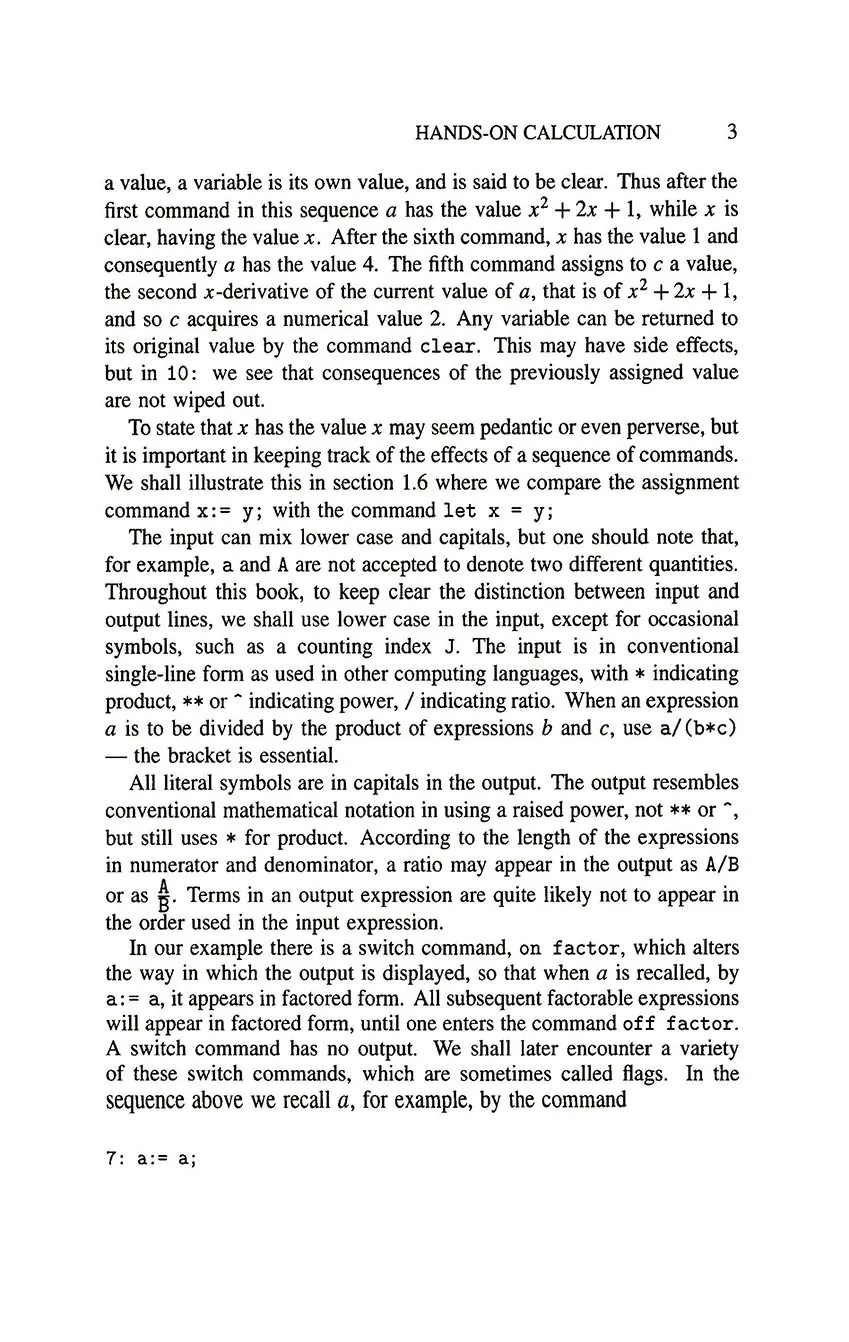
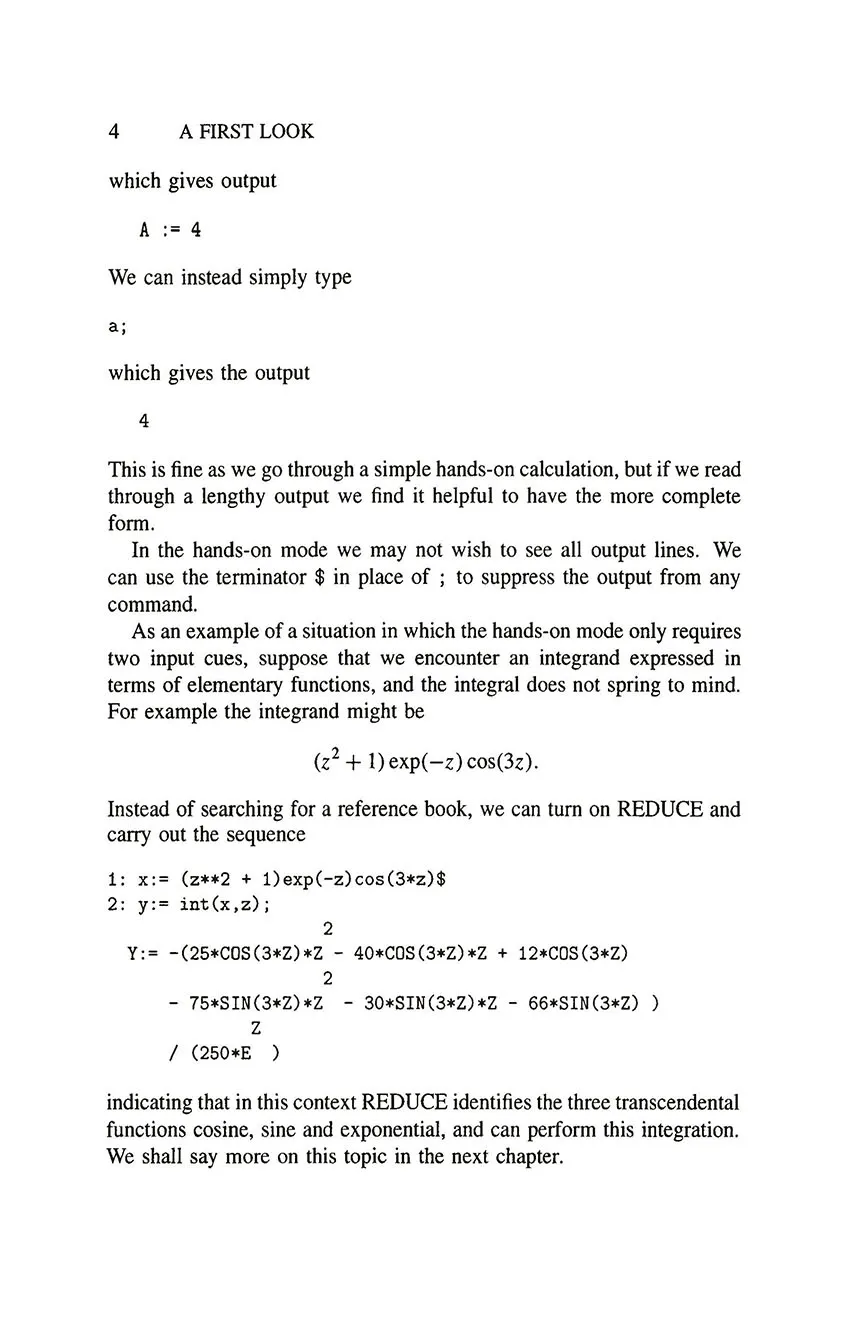

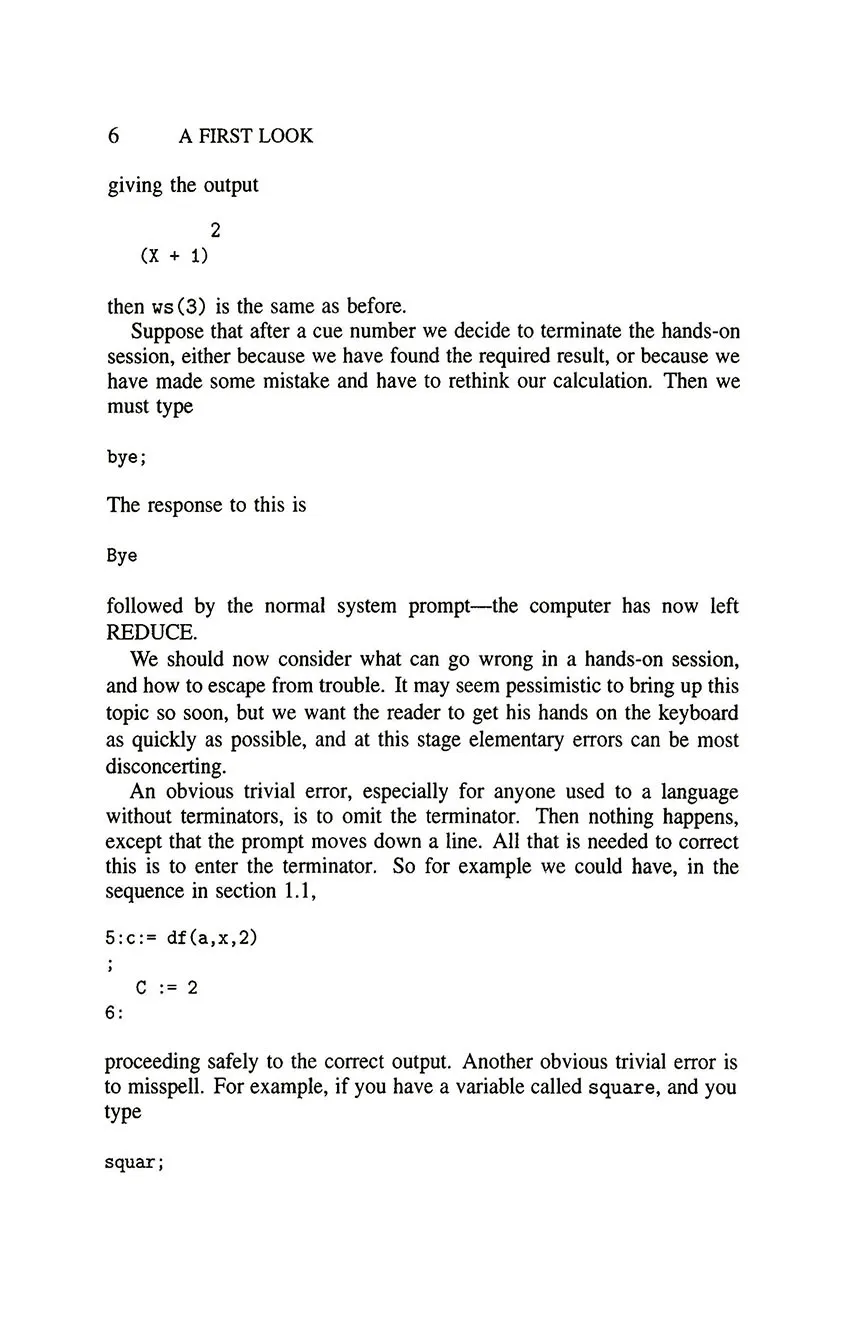
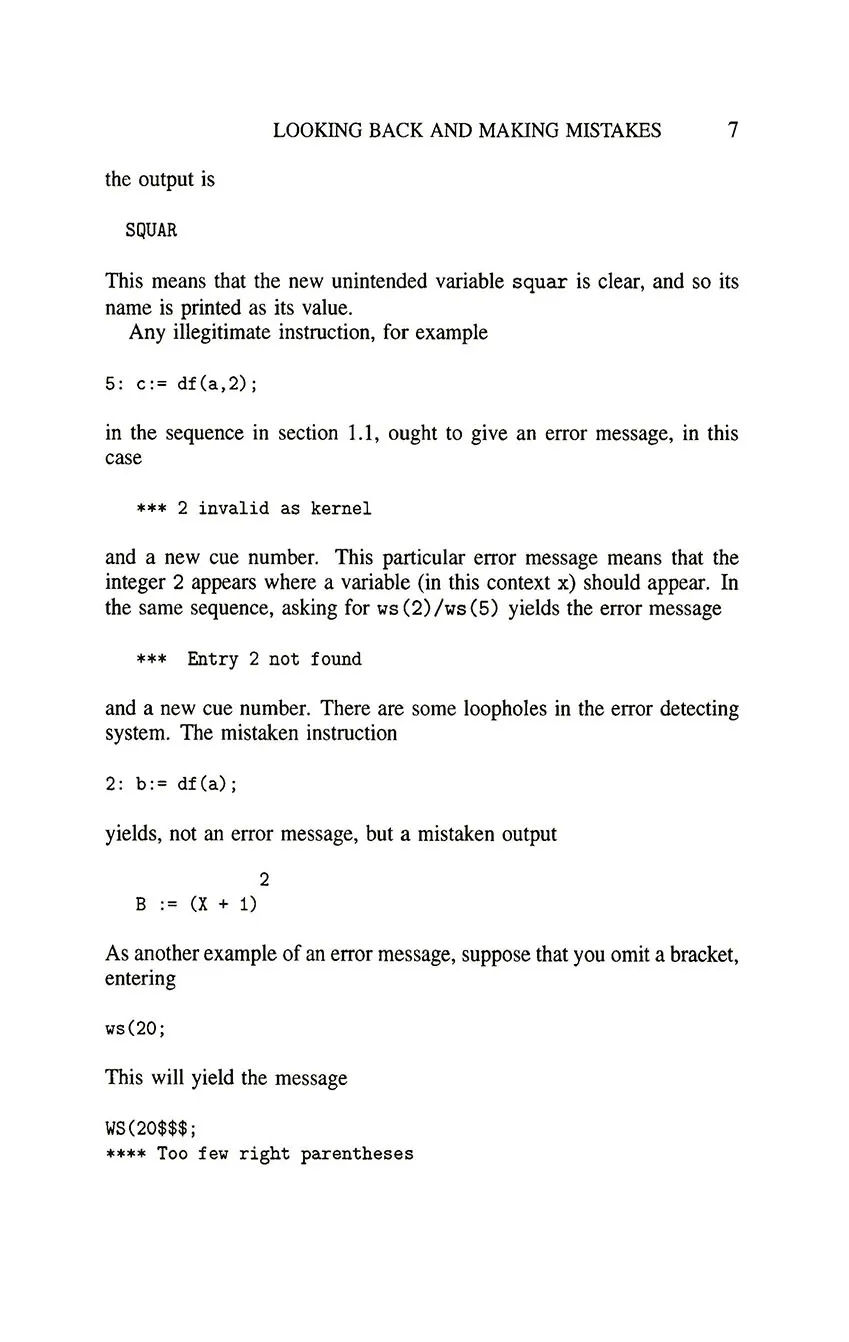
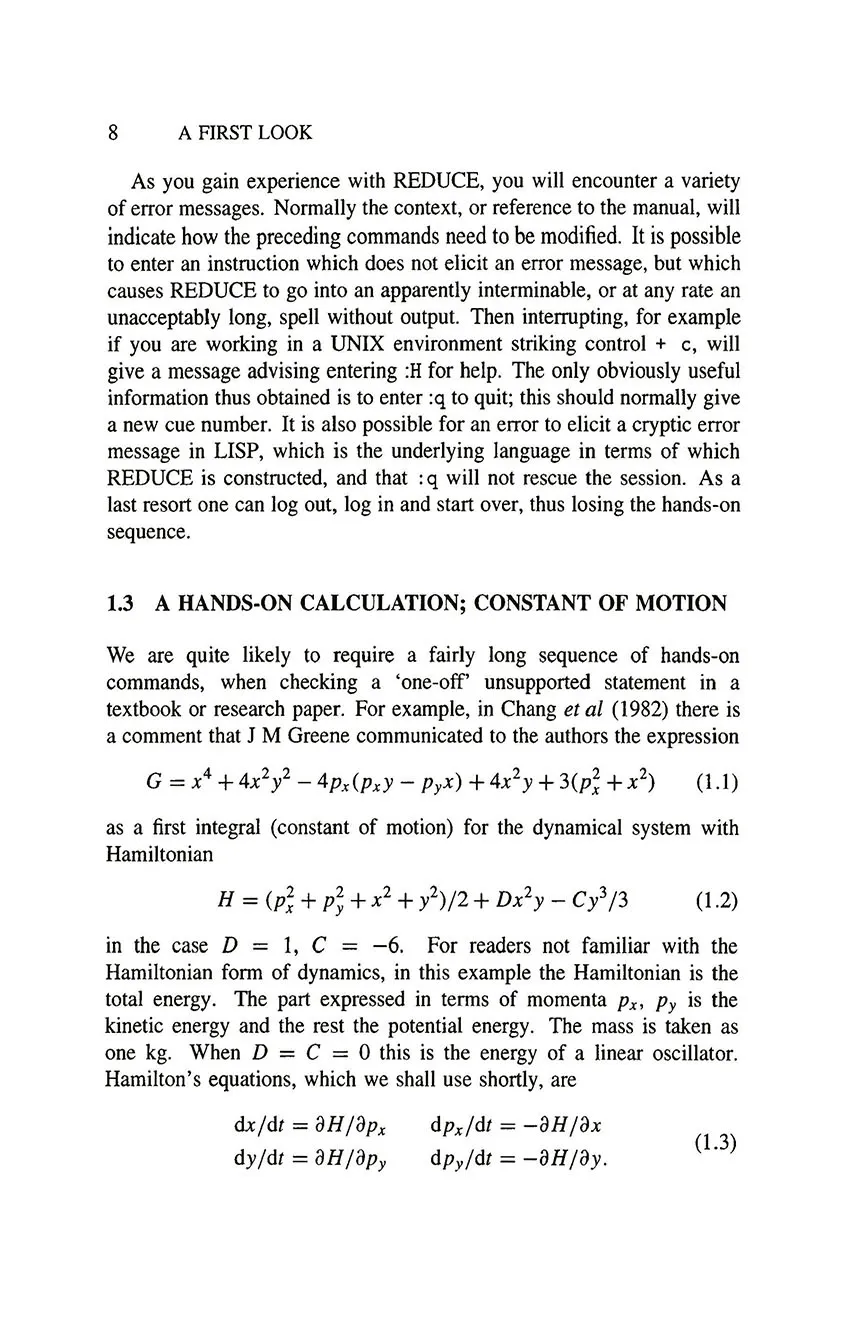
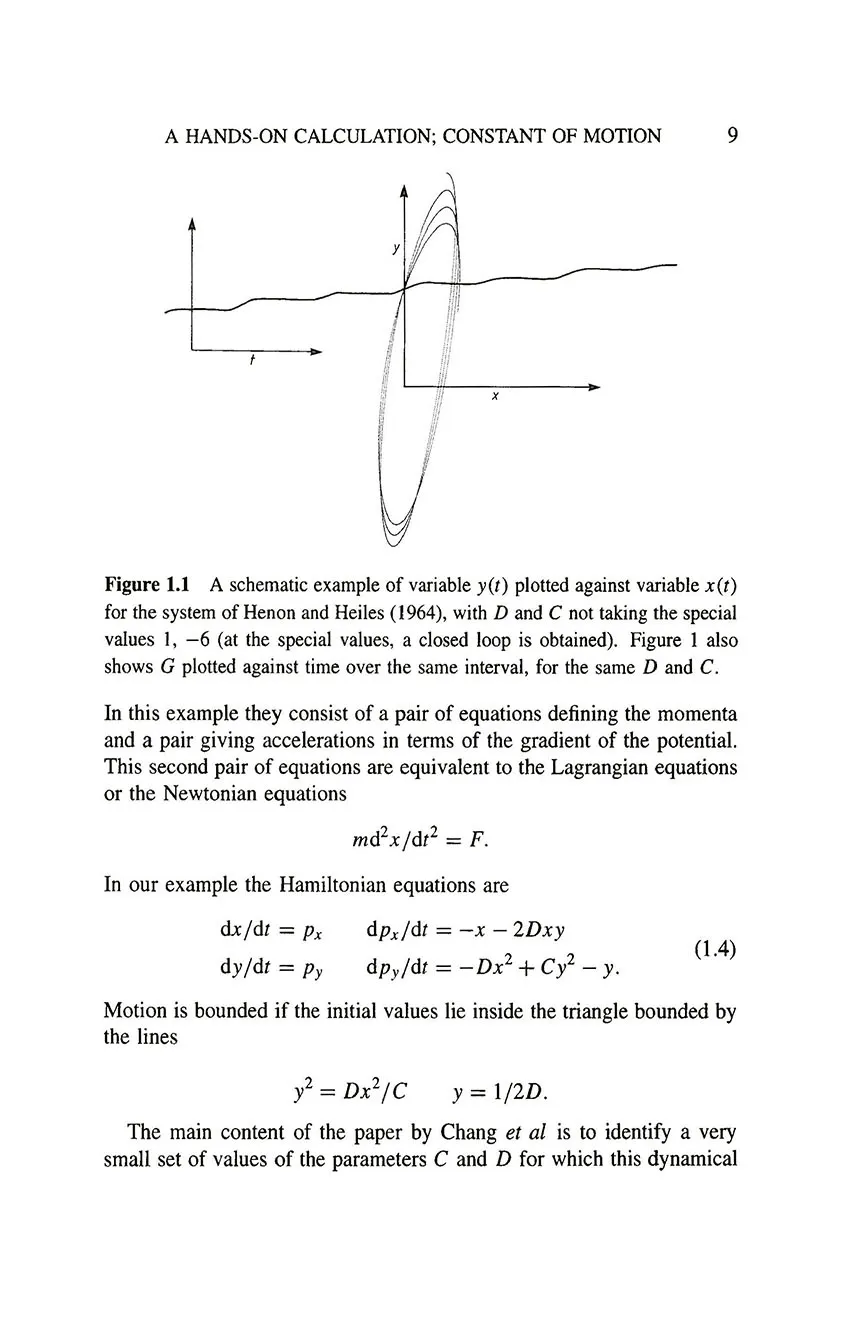

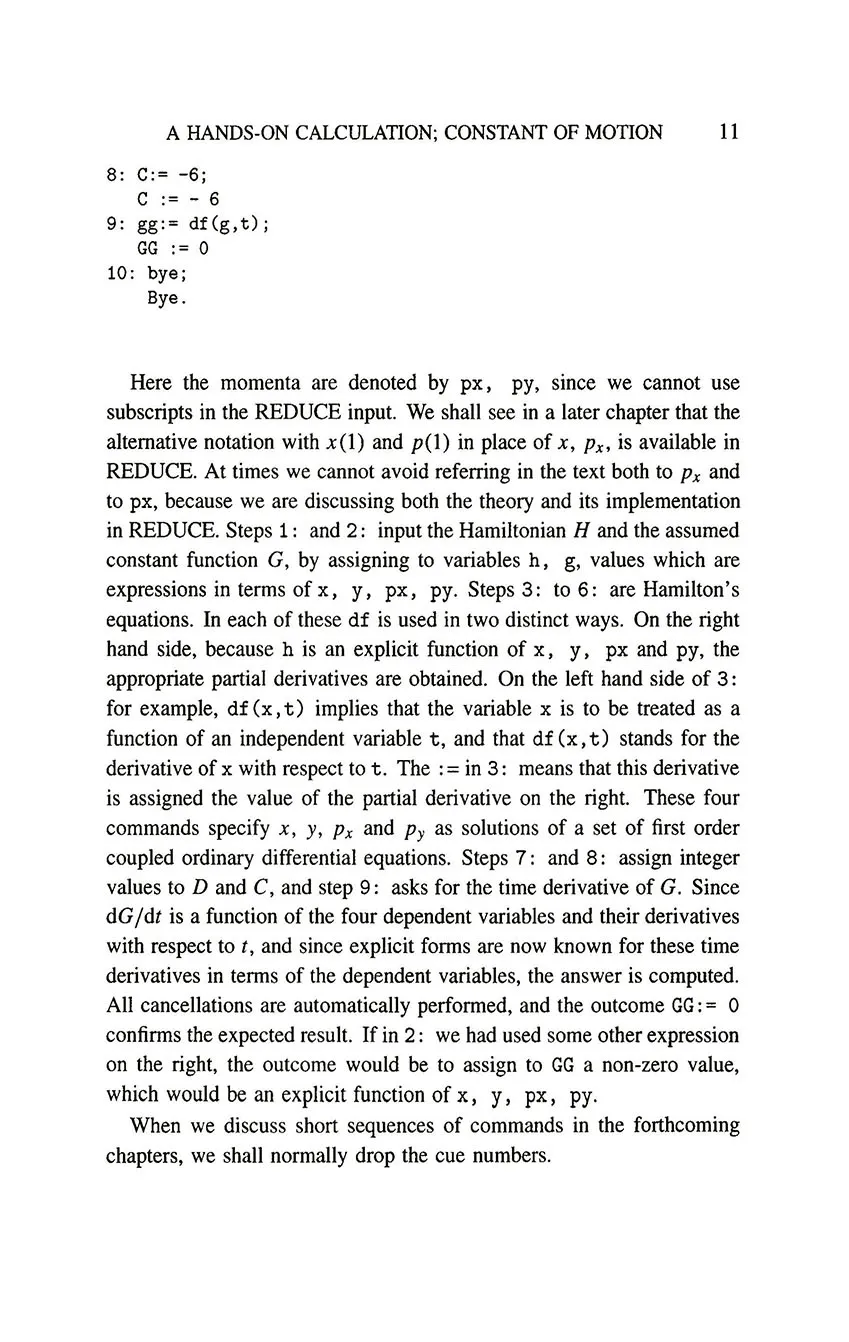

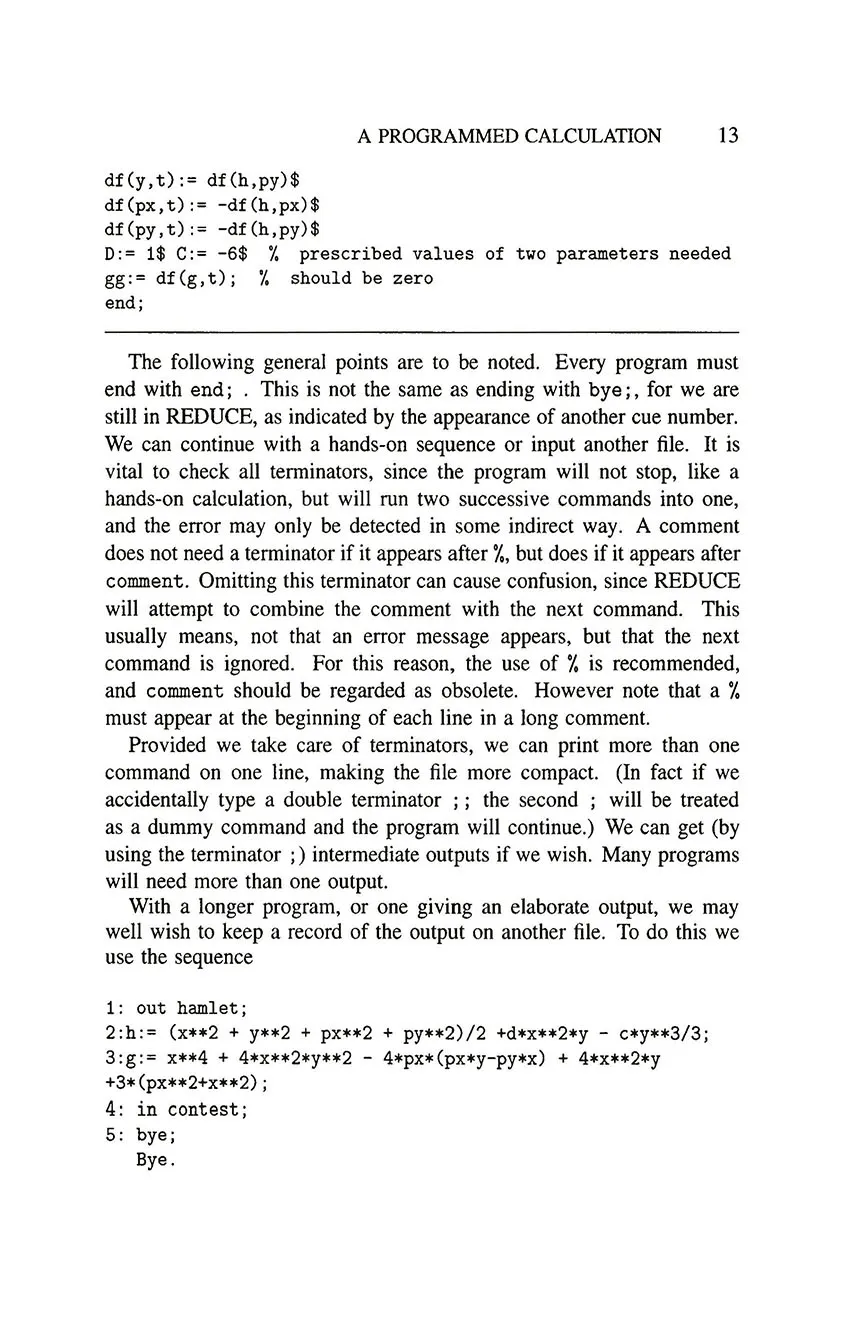



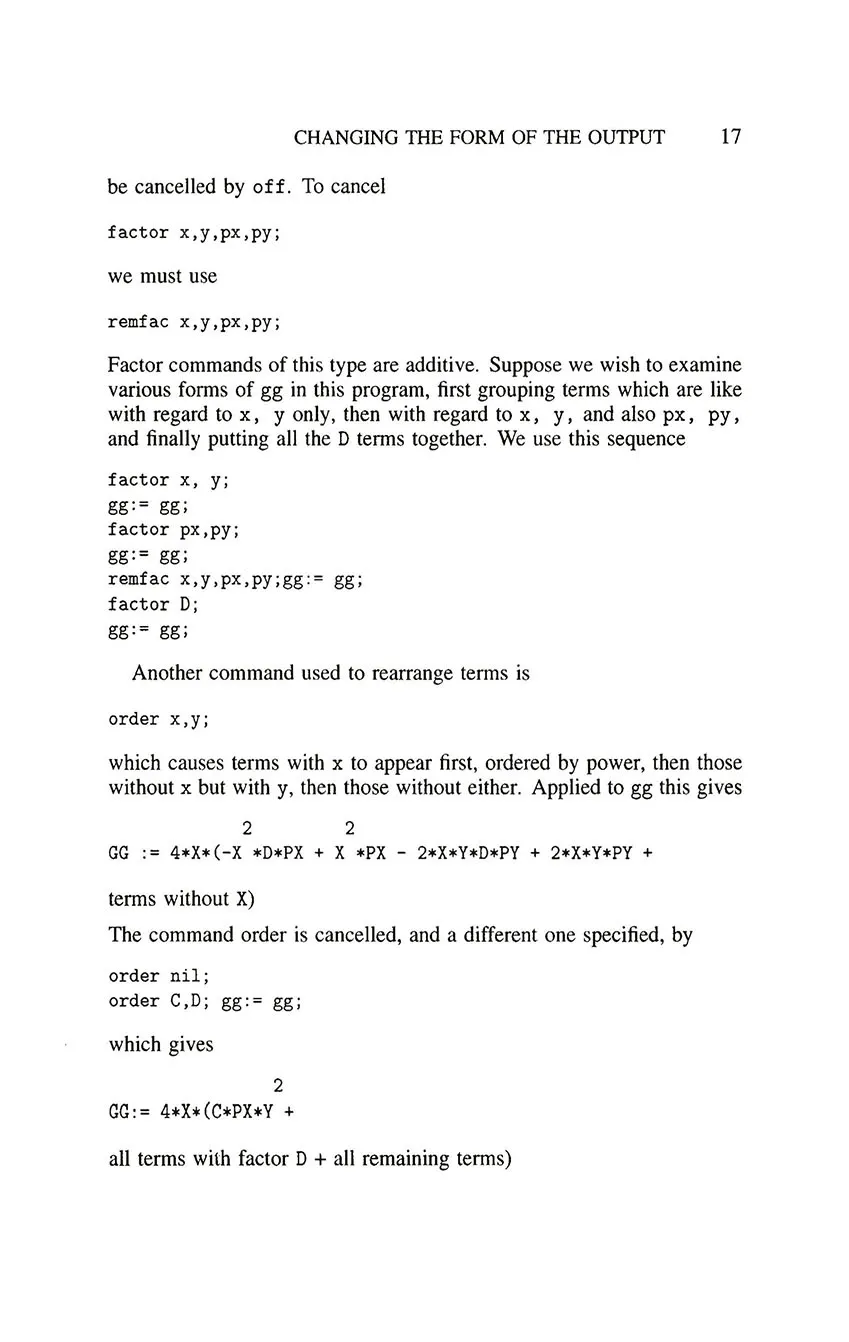

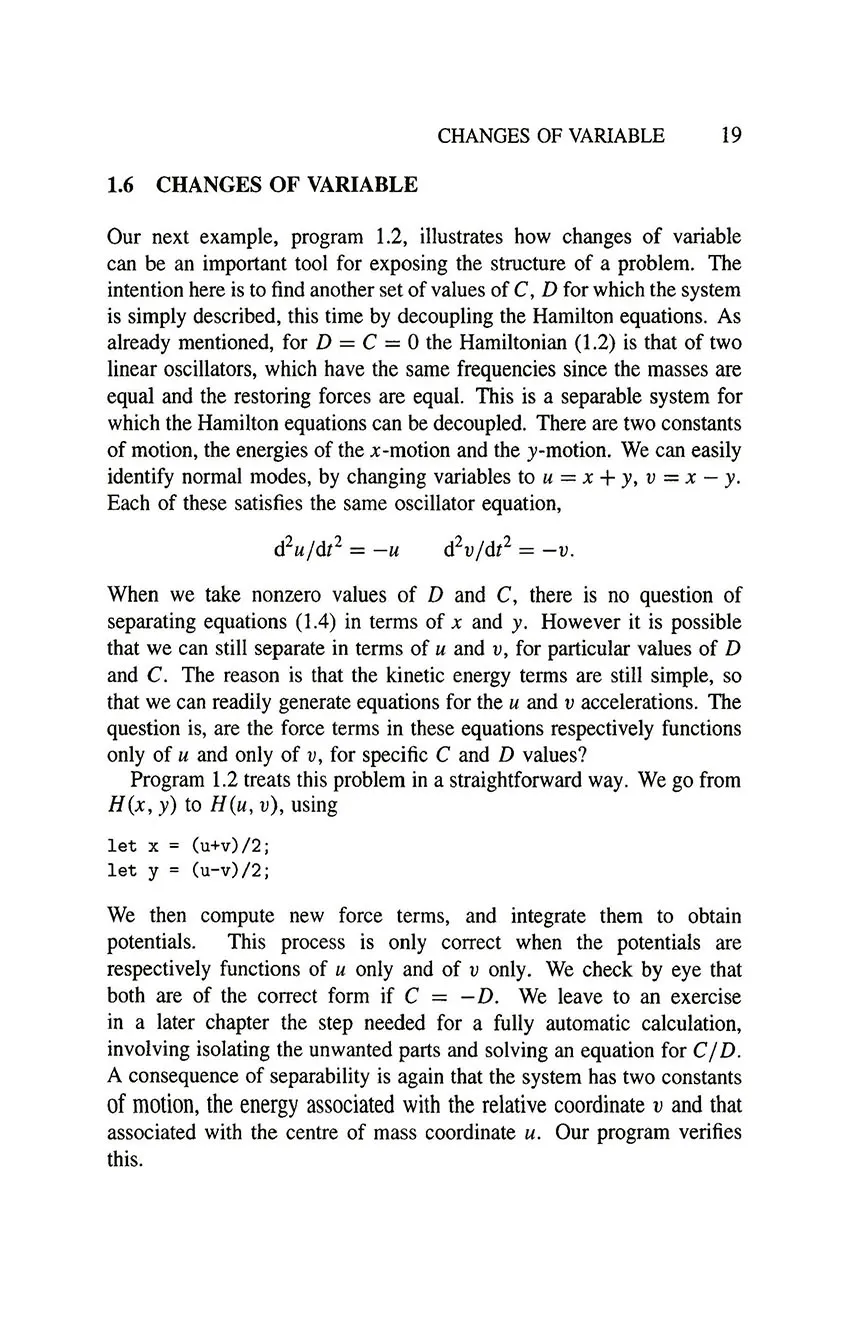
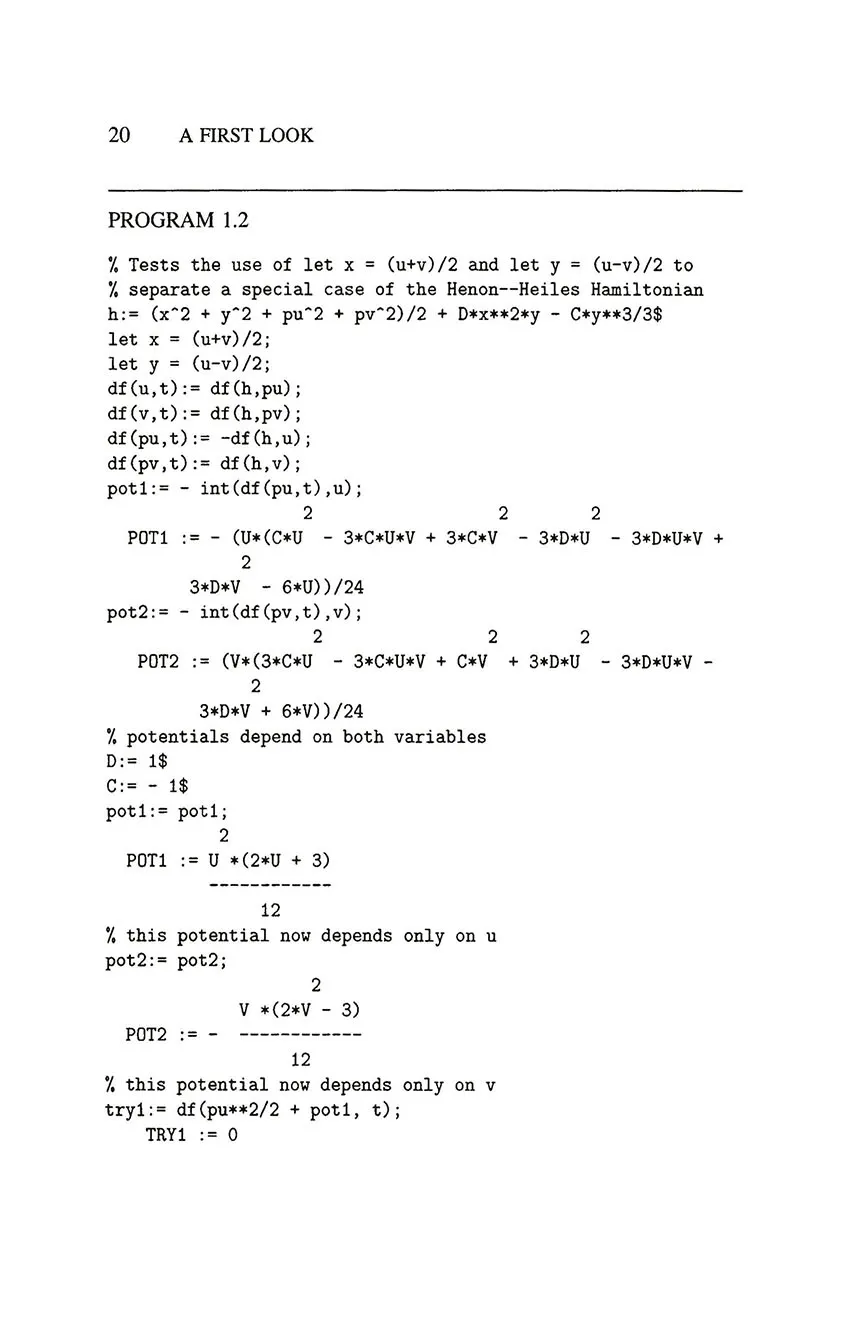

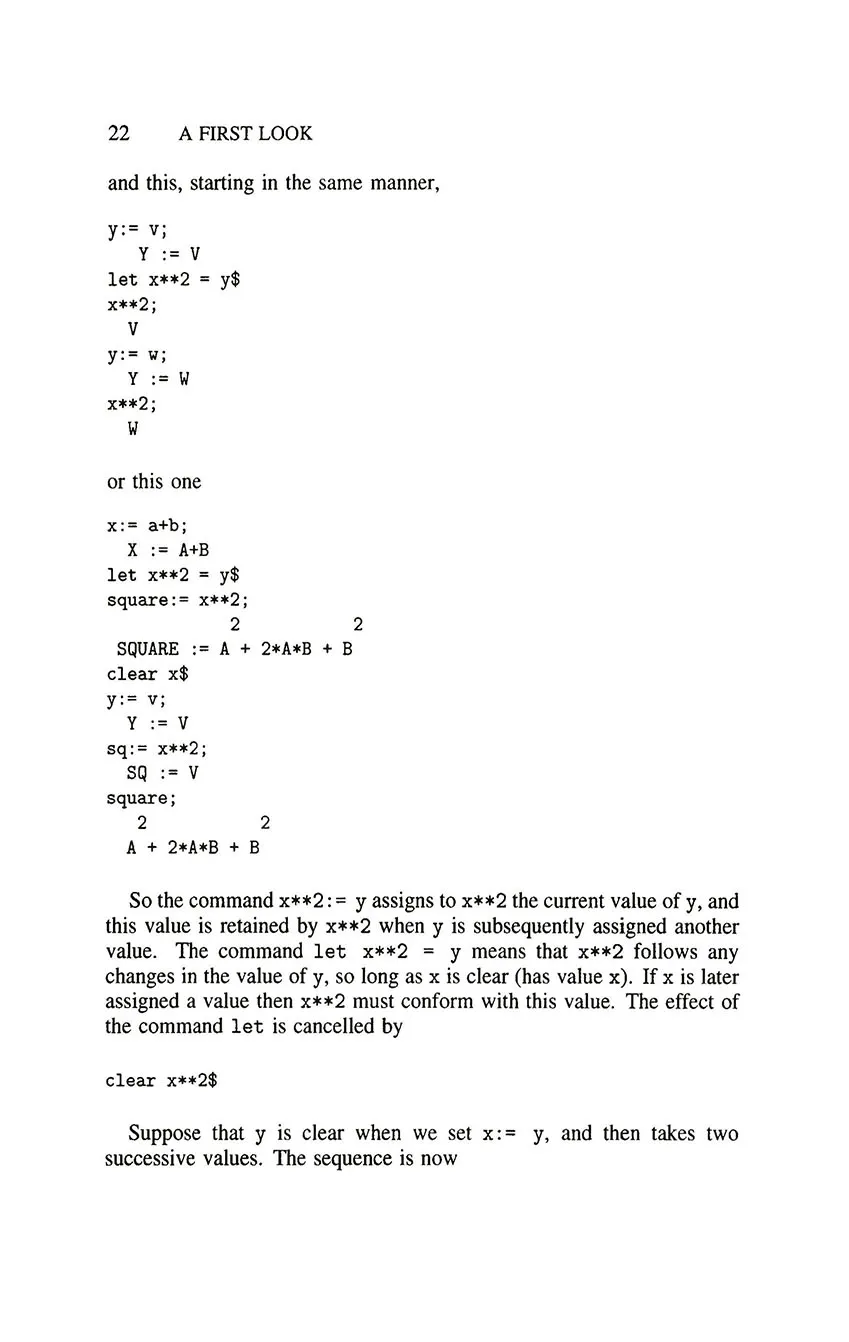
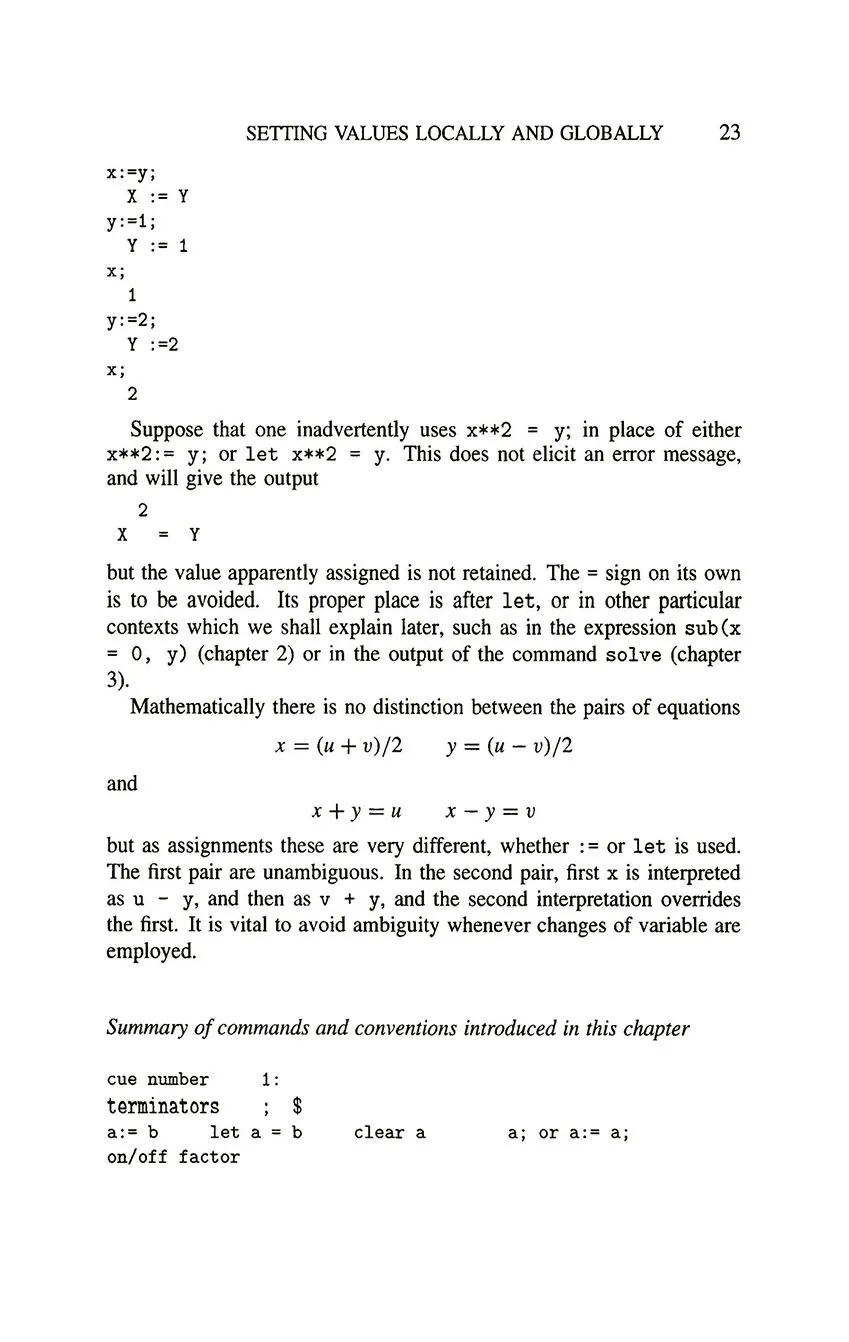
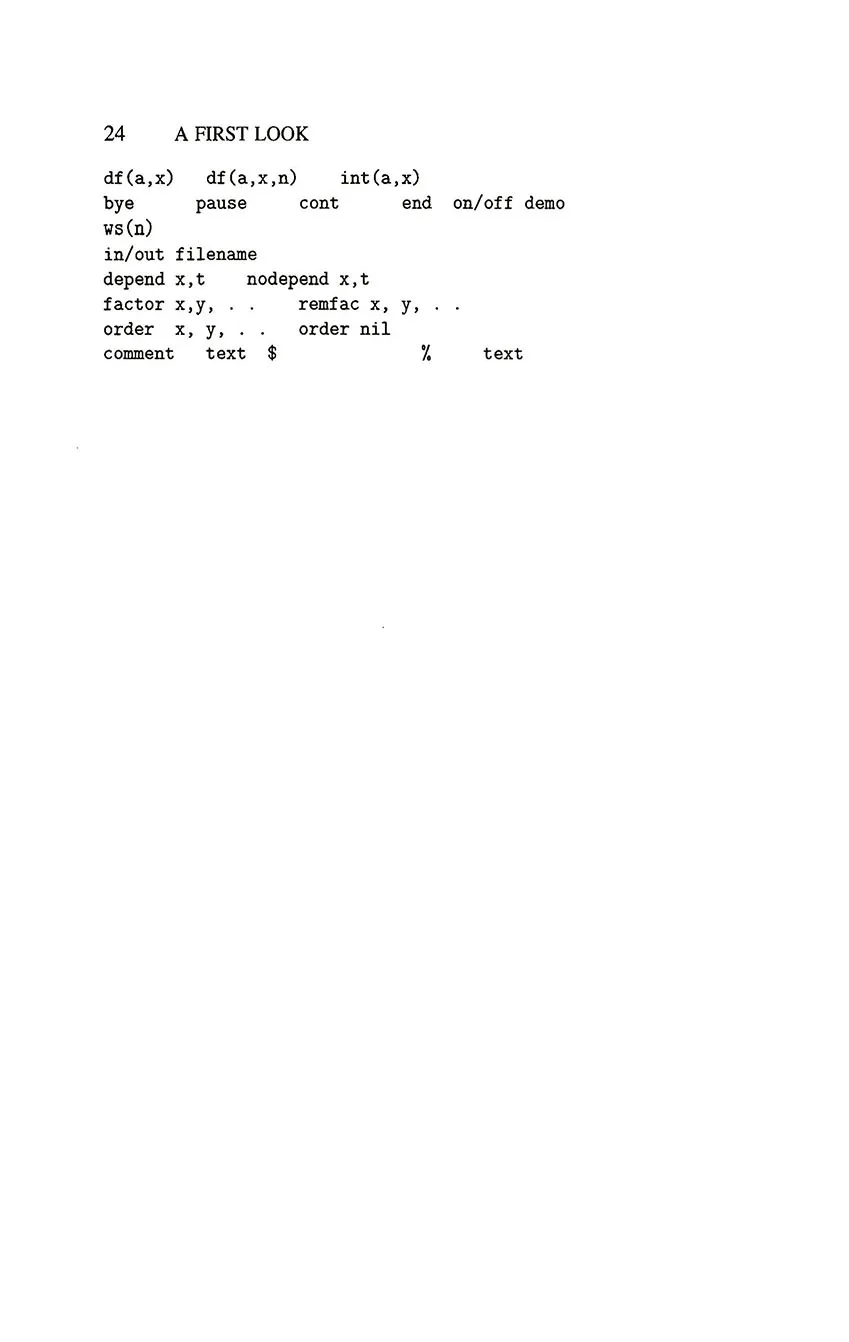
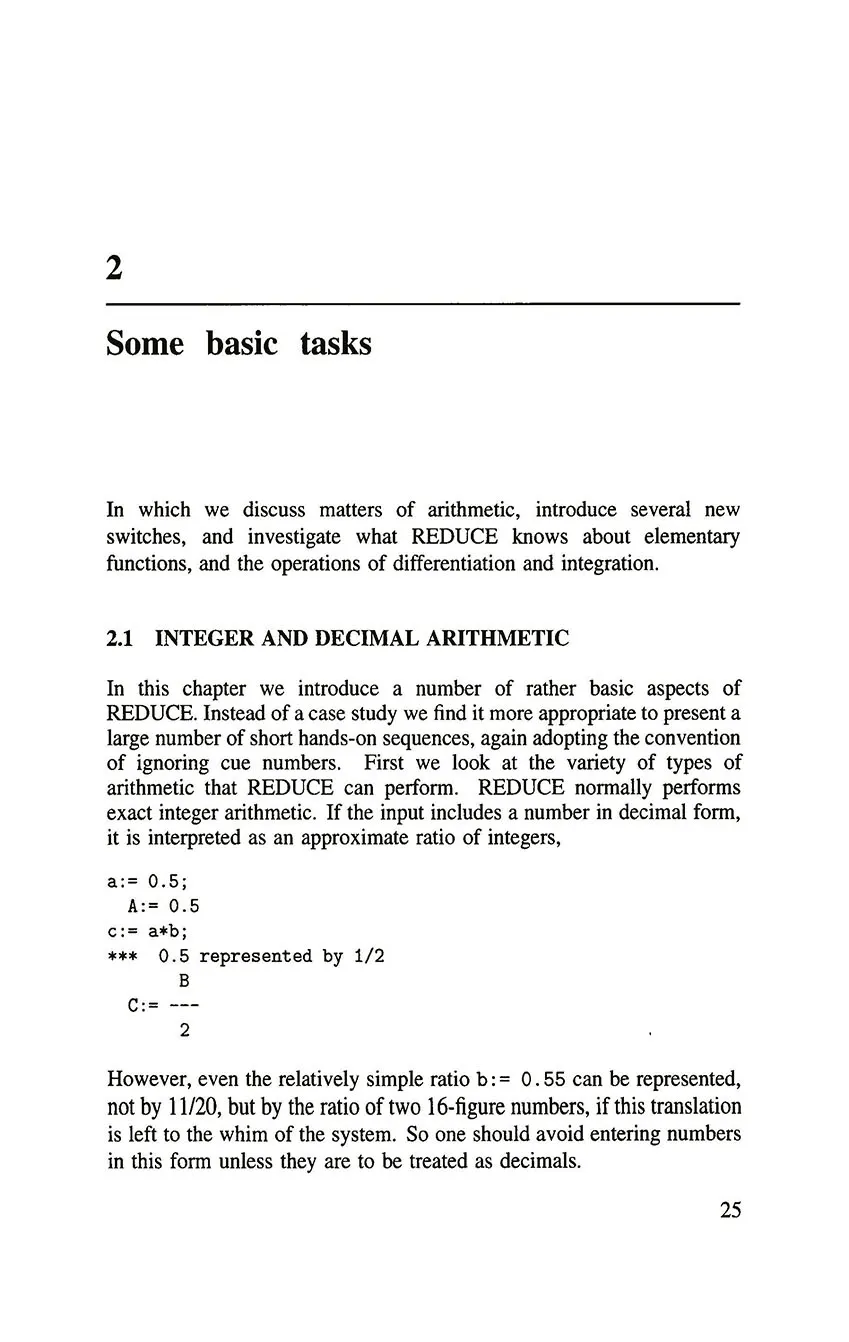
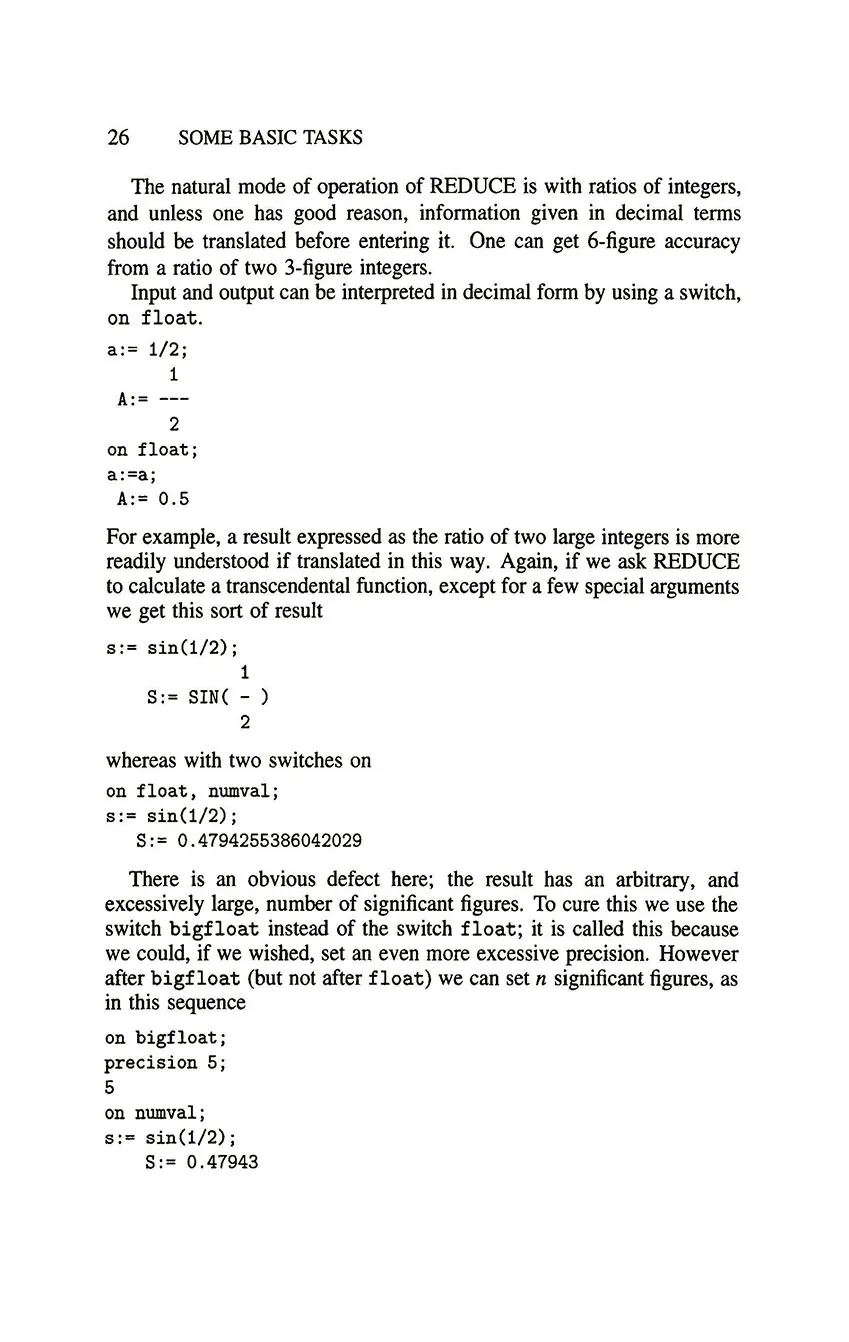

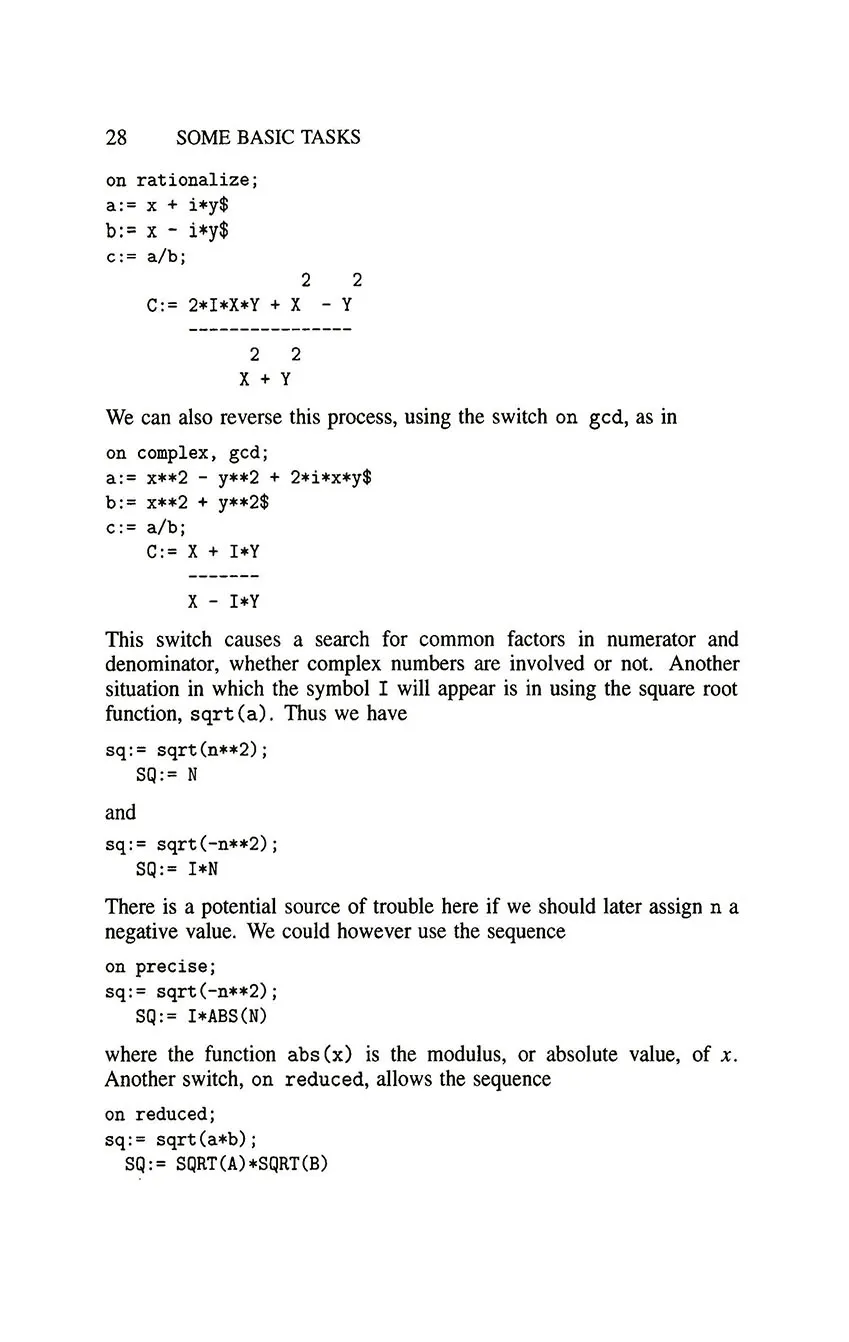
Table of contents
- Cover
- Half Title
- Title Page
- Copyright Page
- Contents
- Preface
- Acknowledgments
- 1 A first look
- 1.1 Hands-on calculation, assignments and values
- 1.2 Looking back and making mistakes
- 1.3 A hands-on calculation; constant of motion
- 1.4 A programmed calculation; constant of motion
- 1.5 Changing the form of the output
- 1.6 Changes of variable
- 1.7 Setting values locally and globally
- 2 Some basic tasks
- 2.1 Integer and decimal arithmetic
- 2.2 Complex and modular arithmetic
- 2.3 Elementary transcendental functions
- 2.4 Integration
- 3 Linear algebraic equations
- 3.1 The solve command and lists
- 3.2 Dimensional analysis
- 4 Repetitive processes
- 4.1 Loops and procedures
- 4.2 A program to calculate Lagrangian equations
- 4.3 A program to calculate Poisson brackets
- 4.4 More on procedures; scalar and vector products
- 5 Determinants, polynomials and conditional statements
- 5.1 Stability, polynomials and determinants
- 5.2 An extension of the Lorenz model
- 5.3 Conditional statements
- 6 Non-commuting operators
- 6.1 Operators
- 6.2 Commutators for conserved vectors
- 6.3 Perturbation theory for a 1-dimensional oscillator
- 7 Harmonic balance
- 7.1 The harmonic balance method for nonlinear oscillators
- 7.2 Chebyshev polynomial method; arrays
- 7.3 Trigonometric expansion and contraction
- 7.4 Interference of for all . . . let . . . commands
- 7.5 Harmonic balance with elliptic functions
- 7.6 An example to illustrate the use of parts
- 8 The REDUCE-FORTRAN interface
- 8.1 Transferring results to a numerical program
- 8.2 The GENTRAN package
- Appendices
- A REDUCE 3.4
- B An Application to Plasma Waves
- References
- Index